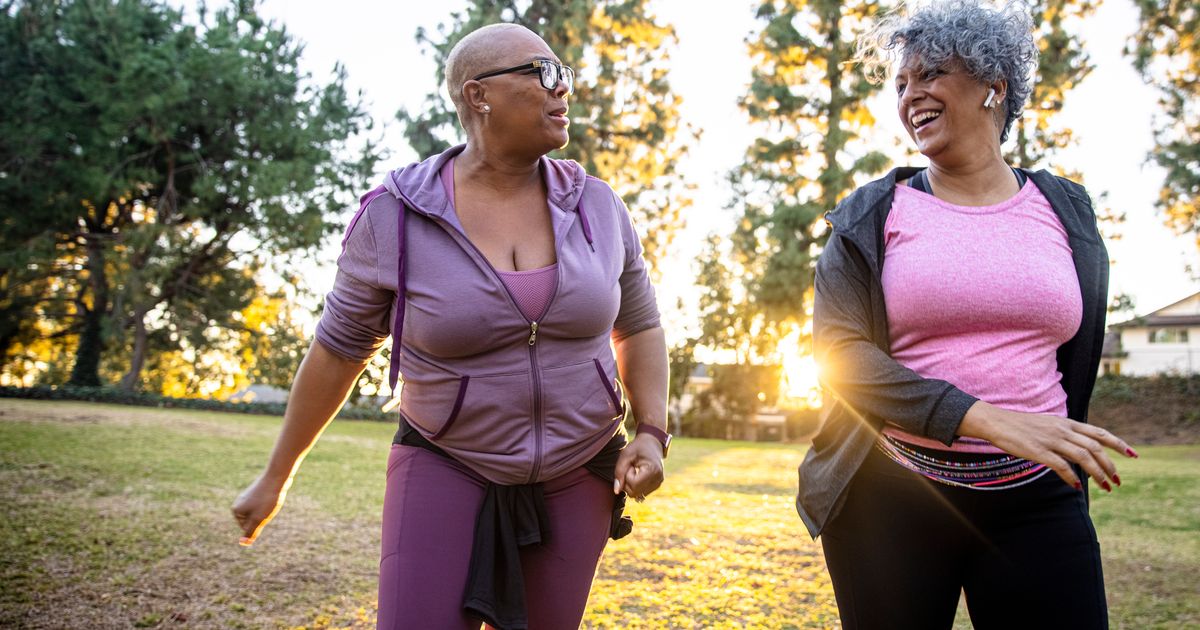We often associate exercise with pushing yourself to the maximum, running miles and miles, or doing a session of intense powerlifting. But there are also many benefits to lower-intensity workouts, like walking, hiking, swimming, yoga, resistance training, riding a bike or hopping on the elliptical.
“Low-intensity training is when you are training between 57 to 63% of your maximum heart rate for a sustained period of 30 minutes or more,” said Brian Nunez, a performance coach and “master trainer” for Nike.
This type of exercise is typically performed at a steady and consistent pace, in contrast to high-intensity interval training, or HIIT, which mixes periods of maximum effort and rest.
Low-intensity workouts can give you the cardiovascular benefits of higher-intensity fitness without the impact or stress on your joints, Nunez said. They can also be done after another workout as a cooldown or as a recovery day exercise to keep the body active in between harder sessions.
“Low-intensity training is also great for people starting out or those coming back from a long break of working out,” Nunez said. Low-intensity workouts, like walking, can be easier to commit to than a daily HIIT class, too. And consistency, Nunez stressed, will always trump intensity in terms of the health and sustainability of any worthy goal.
If all that doesn’t convince you, here are nine reasons to give a low-intensity workout a try:
You’ll Experience Increased Brain Activity
“Low-intensity exercise is showing positive side effects in improving all sorts of mental illnesses and cognitive dysfunctions,” said Dylan Knight, a Los Angeles-based personal trainer and the CEO of Fitness From Within Personal Training.
A 2019 study conducted by Germany’s University Hospital Bonn measured the effects of both high-intensity and low-intensity exercises on the brain. A group of athletes performed the two separate intensities on different days, with MRIs measuring brain activity in response to both types of training levels.
“Interestingly, the findings … revealed a major difference between them. The high-intensity exercise showed a greater effect in emotional intelligence, whereas the low-intensity exercise had shown a greater improvement in cognition and attentional response levels,” Knight said.
“So not only does exercise in general make you more emotionally regulated as a person, but low-intensity exercise specifically plays a positive effect on a person’s neuroplasticity levels in the long term as well.”
It’s Easier On Your Body
“While performing exercises at a less intense rate, you are applying less stress to your muscles and joints,” said Jessica Domi, a certified personal trainer and the director of operations with Fredericksburg Fitness Studio in Virginia.
High-intensity exercises, on the other hand, can sometimes lead to overuse injuries. “Low-intensity also means less time under heavy loads, which also creates a reduced risk for muscle strains and inflamed joints,” said Katie Kollath, a co-owner of Colorado’s Barpath Fitness.
It Can Help Alleviate Stiffness
“Performing physical activity at a steady pace and in a consistent manner can help relieve stiffness, pain and injury to joints and muscles,” Domi said.
Stiffness may occur when you have been physically inactive for a while, she added. This is where low-intensity exercise can help, by always keeping the muscles and joints moving.
“Joint pain can be reduced by consistent movement, which then improves strength in the muscles surrounding the joint,” Domi said.
You Can Do It Anywhere
“If you go to the gym or for a long run, you need to change into your workout gear, make sure you’re fueled properly, get to the place where you’re going to work out, psych yourself up, then do the workout itself,” said Joe Johnson, a fitness instructor and the owner of the U.K.-based 9 to 5 Nutrition, which offers online personal training and nutrition coaching.
HIIT workouts can also require certain props like kettlebells, which you may not have handy at home. Low-intensity exercise can be as simple as heading out your front door and going for a walk or bike ride.
“The biggest benefit of this is that it saves time and means there are fewer barriers in place that’ll give you an excuse to skip your session,” Johnson said. This also makes low-intensity workouts great for anyone who is on the road.
You Can Multitask
Though we all strive to be single-taskers, sometimes there’s just not enough time in the day to do it all. Low-intensity workouts give busy people a chance to fit in a workout when they otherwise might not be able to.
“Ever tried to talk when you’re running on the treadmill? It’s not happening,” Johnson joked. But if you hit the streets for a low-intensity walk, you can chat on the phone, catch up with podcasts or even have a work meeting. “This can save you a ton of time because you’re killing two birds with one stone,” Johnson said.
It’s Something You Can Do Every Day
Fitness professionals advise against performing higher-intensity workouts every day. Low-intensity workouts, however, are easier on your body and require fewer rest days, Johnson said.

Trevor Williams via Getty Images
Your Balance May Improve
Studies have linked low-intensity workouts to an improvement in balance.
“If you have poor balance and start jumping or running, your joints will take loads of the strain in order to keep you from falling, but the weak muscles won’t have the ability to react quick enough to hold strong positions or create strength,” said Abi Fernandez, a registered nurse and musculoskeletal practitioner with Loving Tums, a holistic bodywork and fitness organization for women.
In this instance, she said, your body simply finds ways to cheat this muscle weakness due to the speed. But when you do slow exercises, like the Tree Pose in yoga or some body weight gym exercises like lateral step-ups, you will be able to train the stability and balance systems.
“You will slowly feel your glutes, thighs, abdomen firing and wanting to help you,” Fernandez said.
You’ll Experience An Energy Boost
A 2008 study by the University of Georgia found that sedentary people can feel 20% more energized by engaging in low-intensity workouts. The research team recruited 36 volunteers who were not regular exercisers and broke them into two groups to complete moderate- and low-intensity aerobic workouts three times a week for a period of six weeks.
They all experienced the same increase in energy, but the group who did lower-intensity workouts felt significantly less fatigued than the moderate-intensity group.
It’s A More Sustainable Workout
Another perk of low-intensity workouts is that they’re more sustainable. And having a routine that is sustainable means you will be consistent with it, which is the most important thing for a fitness plan.
Don’t feel like working out? Call up a friend and go for a walk, or make a plan to ride your bikes to a nearby café for a healthy lunch. And you may even enjoy it: A 2015 study found that participants liked low-intensity workout training more than the HIIT variety.


